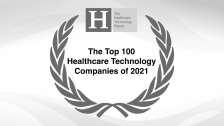Technological advancements in the medical field are helping save lives every day. Healthcare AI software is a major asset for teams that are overextended and seeking assistance in getting patients diagnosed, treated and discharged faster.
While AI-based clinical decision support software is considered a medical device, most AI software sales do not go through a group purchasing organization (GPO). This leaves physicians and care team members with the task of championing new clinical decision support and workflow software solutions to stakeholders and those with purchasing power.





